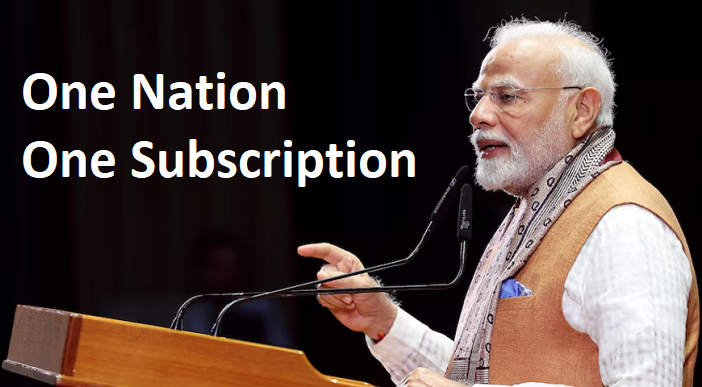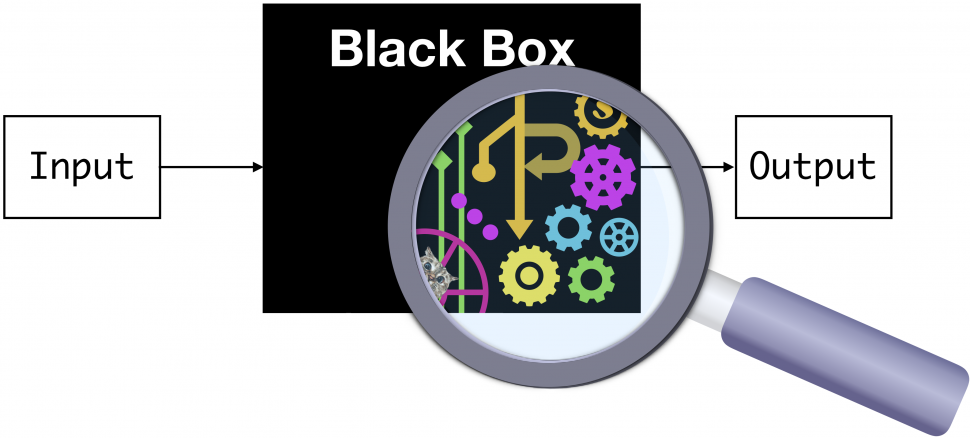- Courses
- GS Full Course 1 Year
- GS Full Course 2 Year
- GS Full Course 3 Year
- GS Full Course Till Selection
- Answer Alpha: Mains 2025 Mentorship
- MEP (Mains Enrichment Programme) Data, Facts
- Essay Target – 150+ Marks
- Online Program
- GS Recorded Course
- Polity
- Geography
- Economy
- Ancient, Medieval and Art & Culture AMAC
- Modern India, Post Independence & World History
- Environment
- Governance
- Science & Technology
- International Relations and Internal Security
- Disaster Management
- Ethics
- NCERT Current Affairs
- Indian Society and Social Issue
- NCERT- Science and Technology
- NCERT - Geography
- NCERT - Ancient History
- NCERT- World History
- NCERT Modern History
- CSAT
- 5 LAYERED ARJUNA Mentorship
- Public Administration Optional
- ABOUT US
- OUR TOPPERS
- TEST SERIES
- FREE STUDY MATERIAL
- VIDEOS
- CONTACT US
One Nation One Subscription ONOS Scheme
One Nation One Subscription ONOS Scheme

The Union Cabinet on November 25, 2024 approved a budgetary allocation of Rs 6,000 crore for an initiative called ‘One Nation One Subscription’ (ONOS) which the Centre hopes will help India’s higher education institutions (HEIs) access academic resources for the better.
About One Nation One Subscription (ONOS) Scheme
Objective: The primary goal of the ONOS scheme is to obtain national licenses for e-journal and database subscriptions across STEM (Science, Technology, Engineering, and Mathematics) and social sciences fields.
Key Features:
- Digital Access:
- Access to ONOS will be managed by INFLIBNET (Information and Library Network), an autonomous inter-university center under the University Grants Commission (UGC).
- It will offer a fully digital process for all institutions, ensuring seamless access to resources.
- Monitoring:
- The Anusandhan National Research Foundation (ANRF) will be responsible for periodically reviewing the usage and publications of Indian authors.
- International Journals:
- ONOS will provide access to 13,000 journals from 30 leading publishers, including prestigious names like:
- Oxford University Press
- Cambridge University Press
- Elsevier Science Direct (including Lancet)
- ONOS will provide access to 13,000 journals from 30 leading publishers, including prestigious names like:
- Financial Allocation: The government has allocated ₹6,000 crore for the ONOS scheme, covering the period from 2025 to 2027, under a new Central Sector Scheme.
- Implementation Strategy:
- The Department of Higher Education (DHE) will provide a unified portal for access.
- Additionally, the DHE will conduct Information, Education, and Communication (IEC) campaigns to raise awareness about ONOS.
What is the need of One Nation One Subscription Scheme?
- Profits from Public Funds: Academic publishing is a highly profitable industry, generating USD 19 billion in revenue with profit margins up to 40%.
- However, these profits are largely derived from public funds but are concentrated in a few private companies.
- Countering Predatory Publishing: Numerous low-quality journals exploit Indian researchers by charging publication fees without proper peer review.
- This undermines the quality of research and leads to the proliferation of predatory publishing.
- Removing Access Barriers: Subscription-based models create significant access barriers due to high costs.
- Researchers from smaller institutions face difficulties in accessing research and collaborating globally.
- For example, Nature Communications charges $6,790 per paper, making it unaffordable for many researchers.
- Favorable Agreement Clauses: Indian institutions often sign agreements with publishers that prioritize the publishers' interests.
- These agreements may include restrictive copyright transfers, limiting Indian researchers' control over their own work.
- Reducing Financial Burden: In 2021, Indian authors paid ₹380 crore in Article Processing Charges (APCs) for Gold Open Access journals.
- This highlights the financial strain on researchers, making it increasingly difficult for them to publish their work.
Significance of One Nation One Subscription Scheme
- Alignment with National Goals: Supports Viksitbharat@ 2047, NEP 2020, and ANRF.
- Interdisciplinary Research: Promotes core and interdisciplinary research by offering diverse journals, all cities, including tier 2 and tier 3 areas.
- Cost Efficiency: It reduces financial burden and ensures affordable access for institutions nationwide.
- Collective Bargaining Power: Leverages over 6,300 institutions to secure better access to resources, which is crucial given the stagnation in research funding.
- Research Productivity: It will enhance India's scientific output, bridging the gap with research leaders like China and South Korea.
Issues with One Nation One Subscription (ONOS)
- Shift to Open Access (OA): With over 50% of research now freely available, the One Nation One Subscription (ONOS) model may become outdated.
- For example, the U.S. will require all publicly funded research to be freely accessible by 2026, raising concerns about the sustainability of ONOS beyond 2025.
- Limitations of Nationwide Subscription:
- ONOS may prioritize popular journals, neglecting niche fields.
- This could limit access for smaller communities and reduce research diversity.
- Commercial Publisher Dominance:
- ONOS risks favoring Western publishers with high profit margins (up to 40%).
- This could undermine publicly funded research, as it continues to support large commercial publishers.
- Copyright Issues:
- Researchers often relinquish their copyrights when publishing, allowing publishers to use their work without permission.
- For example, Taylor & Francis allowed Microsoft to use its journals for AI training. Since the authors had lost copyright, Microsoft didn’t need approval.
- Digital Content Preservation:
- Relying on publishers for content preservation is risky, as demonstrated by the 2023 discontinuation of the journal Heterocycles, published by the Japan Institute of Heterocyclic Chemistry.
- This led to 17,000 articles becoming inaccessible.
- Other Issues:
- Lack of support for Indian journals.
- Transparency issues regarding the selection, monitoring, and other processes under ONOS.
- Unreliable internet availability in tier 2 and tier 3 cities, hindering access to ONOS.
|
Anusandhan National Research Foundation (ANRF)
Functions:
Key Initiatives:
Organizational Structure:
|
Way Ahead
- Negotiating National Licenses:
- The aim is to achieve a 90-95% reduction in subscription costs.
- Negotiate favorable terms, including waivers on Article Processing Charges (APCs) for Indian researchers.
- Agreement Clauses:
- Develop a common model license agreement that will protect institutional interests.
- Ensure fair terms on Intellectual Property (IP), pricing, and renewals.
- Innovative Services:
- Build infrastructure to:
- Promote resource usage.
- Ensure easy access to resources.
- Monitor trends in usage and research.
- Provide training and support for the sustainability of the system.
- Build infrastructure to:
- Promote Open Access (OA):
- Encourage the adoption of Open Access (OA) and fair use of copyrighted materials.
- Support OA journals and provide funding for APCs for young researchers.
Conclusion
The One Nation One Subscription scheme will revolutionize access to scholarly research, enhance the research output of Indian institutions, and contribute to achieving the goals set out in the National Education Policy and Viksit Bharat 2047.
|
Also Read |
|




